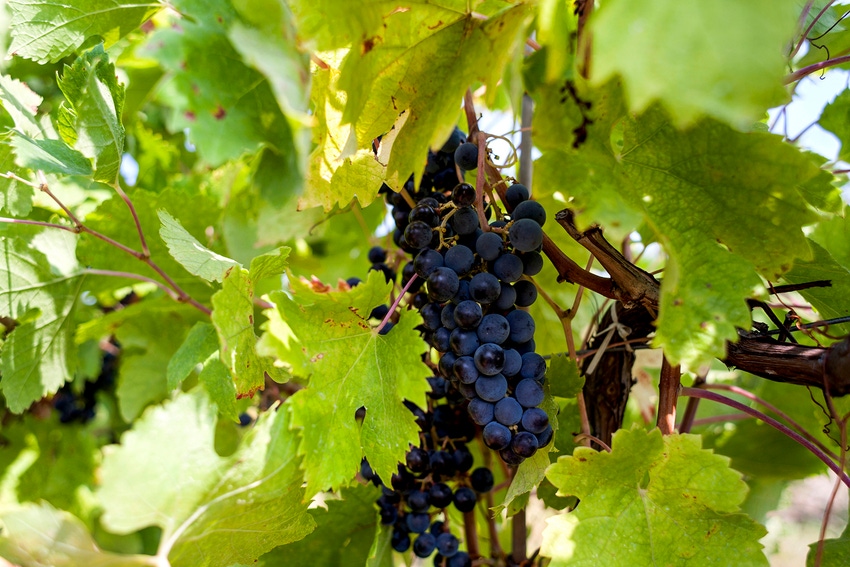
In late July, about three to four weeks before growers in the Lodi AVA were expected to start harvesting their Chardonnay and other early-ripening wine grape varieties, crop size appeared to be from average to a little larger, says veteran grower and consultant Mark Chandler, Lodi, Calif.
That assessment is similar to expectations by other industry observers for an average-size crop, give or take a little, overall for the rest of the Central Valley as well as the central and north coast areas.
“An average size crop would be a mixed blessing,” Chandler says. “Growers might not make as much money as they would with a larger crop. On the other hand, more moderate production should help balance supply with demand. That would be good for the market.”
Chandler, his wife, Jan, and brother-in-law, David Burlington, grow 180 acres of Cabernet Sauvignon and Malbec in their Mokelumne River Partners vineyards in the central part of the Lodi appellation.
Spread over more than half a million acres at the northern end of the San Joaquin Valley between San Francisco Bay and the Sierra Nevada Mountains, the Lodi AVA includes seven sub-appellations totaling about 100,000 acres of vineyards.
Chandler has high hopes for the quality of the Lodi grapes this year.
“In general, the bunches are fairly compact, since the berries aren’t all that large,” he says. “So I think we’re looking at a really good year in terms of crop quality. The Cabernet Sauvignon, with its very evenly-sized berries, should be quite good.”
This variety, along with Chardonnay and Zinfandel, accounts for the majority of Lodi’s wine grape production. Each represents 15 percent to 20 percent of the appellation’s vineyard acreage, Chandler notes.
He describes demand for Lodi’s wine grapes, in general, as strong. The Chardonnay market, which had been showing some weakness in price the last few years, is coming into balance, as growers replaced some of that acreage with other varieties.
“Demand for increasingly popular red wine blends has propped up the market for Lodi Zinfandel. However, it is being edged out by new deep color reds that also blend well. Zinfandel has the lightest crop of all local varieties this year. Hopefully, demand for it will stabilize in 2018-19.”
To help satisfy the strengthening demand for the red blends, Lodi growers have been replacing some of their Zinfandel and Merlot plantings with Petite Sirah, Syrah and Teroldego, which are also included in blends of red wines.
“The growth in demand for red blends from Lodi is still out-pacing the increased supply of these grapes,” he says. “However, the main variety being planted in this area is Cabernet Sauvignon.”
The vineyards here have experienced very little pressure this season from insect pests and, for the most part, diseases, Chandler notes. The one exception was the threat from powdery mildew, especially in the Chardonnay, due to wet spring weather. However, timely applications of sulfur and other fungicides helped control any outbreaks.
Meanwhile, as in other of California’s wine-grape growing areas this summer, several heat waves with temperatures frequently topping the 100-degree mark, have highlighted the importance of timely irrigations to limit water stress on the crop.
Chandler anticipates this year’s Lodi harvest to begin with the first of the Chardonnay in mid-August. That would be about a week later than usual and reflects the rainy, cool conditions in the spring, which delayed bud break by about 10 days, he says.
Since most of the district’s wine grapes are harvested with machines, the supply of migrant workers to pick the crop isn’t much of a concern for most growers, Chandler adds.
Still, the availability of labor earlier in the season remains a critical issue for them.
“It’s been very hard to get workers for pruning and hand-tying the vines,” he says. “One reason is because we compete with cherries and blueberries which have to be hand-picked early in the season. The market for labor has tightened, and workers are also being attracted to higher-paying construction jobs. And it’s not just the supply but also the cost of labor that’s causing concern due to the increase in the state’s minimum wage. The labor problem for growers is becoming steadily more challenging.”
About the Author(s)
You May Also Like




